Review: OnePlus 6T
Nov 15, 2018, 9:00 AM by Eric M. Zeman
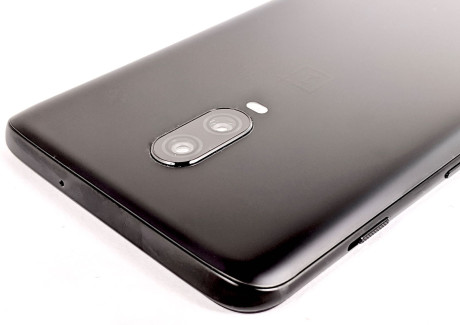

OnePlus 6T
The 6T from OnePlus is among the first wave of phones to put the fingerprint reader under the display. With a svelte glass-and-metal design, huge screen, high-capacity battery, and reimagined cameras, the OnePlus 6T offers a lot of phone for far less than competing flagships. If you want a classy device that gets the job done while saving you hundreds of dollars, the 6T could be it. Here is Phone Scoop's in-depth review.
Hardware
Is It Your Type?
OnePlus has a pretty simple pitch to smartphone shoppers, which is that they can get a flagship device for hundreds of dollars less than the competition. If you're seeking a classy device that offers modern appointments and swift performance, look no further than the OnePlus 6T.
Body
OnePlus releases two phones per year. The first, which arrives in May or June, is noticeably changed from the previous year's models. The second, landing in October, is a minor upgrade to its immediate predecessor. And so we find ourselves with the 6T, a spiffed-up version of the OnePlus 6.
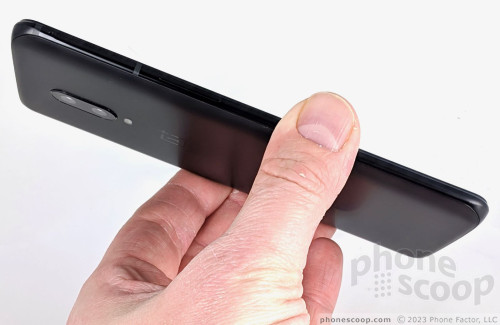
Outwardly, the 6T is hardly changed from the 6. It's a slim slab of black glass and metal. The 6T has a sleek, modern appearance with smooth surfaces front and back. Like the majority of modern flagships, the glass panels sandwich the aluminum frame. Both glass panels are curved where they meet the frame.
OnePlus is currently selling three finishes. The most common are midnight black (matte) and mirror black (glossy). They're equally appealing to my eyes, though I prefer the matte feel of the midnight black. A "Thunder Purple" color variant is also for sale. It's a limited edition and costs more than the black versions.
The 6T is taller, thicker, and heavier than the 6, but only by a little. Somehow the 6T is narrower than the 6, but again, by a hair. At 6.2 inches tall, 2.94 inches wide, and 0.32 inches (8.2mm) thick, it's about the same size as the Pixel 3 XL from Google and iPhone XS Max from Apple. The weight is up by one-quarter of an ounce compared to the 6, likely due to the larger battery within. It feels big, but the slim profile makes it easy to carry around in your pants or coat pocket. The weight gives it authority.
The 6T looks and feels like a high-end device. The finish in the rear glass, for example, is expertly crafted and adds a certain luxury to the phone. Speaking of the glass, OnePlus opted for Gorilla Glass 6. Corning claims Gorilla Glass 6 is more resistant to breakage than Gorilla Glass 5, but that doesn't change the fact that it's glass. It's a good thing OnePlus makes its own range of attractive cases. Buy one.
The phone is splash resistant, which means it can handle sweat and light rain. It cannot deal with being submerged, a level of protection that most other flagship phones offer. Though I wish it were rated IP68, I have no reservations about the quality or craftsmanship of the 6T.
OnePlus is gunning hard for an all-screen face. It's close, with the display accounting for 86% of the front, a good ratio. The side bezels are decidedly slim. There's hardly a chin at all and the teardrop-shaped notch at the top gives the 6T a widow's peak forehead. The user-facing camera is fairly obvious to the eye, but the earpiece speaker emits sound through a hidden slit just above the glass. (This is the same approach as on the Essential Phone.) This can problematic, as some of OnePlus' own, custom-made cases for the 6T partially cover the slit, which impacts call quality.
Notch
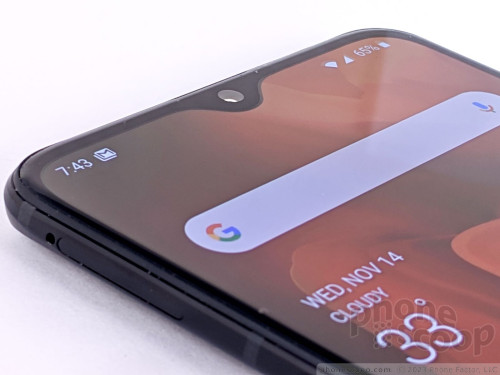
OnePlus' killer ringer switch is on the right side of the phone. The three-position switch lets you control the phone's sound (on, vibrate, silent). Not enough phones offer this kind of simplicity in controlling the ringer. The switch has a ribbed texture that makes it easy to find, and the action is perfect.
Buttons
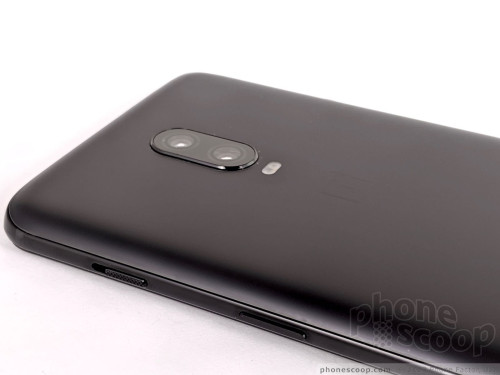
The screen lock button is below the switch. It has a good profile and excellent travel and feedback. The volume toggle is on the left edge. It also has a good profile and acceptable travel and feedback.
The tray for SIM cards is tucked above the volume toggle on the left edge. The metal tray supports up to two SIM cards, but not memory cards.
There's a USB-C port, but unfortunately, OnePlus decided to drop the 3.5mm headphone jack, a feature its own customers asked the company to keep. The 6T includes a USB-C-to-3.5mm adapter in the box, but that may not cut it for some people. The company also has new, affordable USB-C earbuds for sale.
OnePlus flattened out the rear panel glass of the 6T a bit when compared to the 6, particularly close to the side edges. It still has some degree of a curve, but the curve is more subtle. Only the dual-camera module bedecks the rear; the fingerprint reader is gone, relocated under the glass on front. The camera module is typical, which means it's raised above the surface of the glass just a bit.
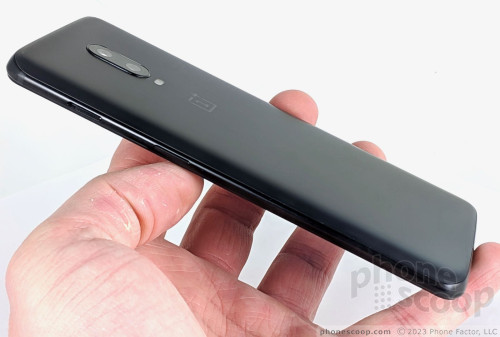
Some may consider the 6T a sideways step. Sure, the under-the-display fingerprint reader is cool, but it comes at the expense of the headphone jack. Otherwise, the hardware is quite good.
Screen
The display measures 6.4 inches across the diagonal and has full HD+ resolution. The aspect ratio is slightly taller than 2:1, at 19.5:9, or 2,360 by 1,080 pixels. It's 60 pixels taller than the screen of the 6. I think the resolution is good enough. At 402ppi, text and images on the screen look sharp. Some competing phones at this size, such as the LG V40 ThinQ, have quad HD resolution. The 6T's full HD+ gets the job done. OnePlus' AMOLED panel does fine. The display delivers enough light for easy indoor and outdoor use. Blacks are black and colors stand out beautifully. Viewing angles are excellent.
Advanced controls include night mode, reading mode, color calibration, and the ability to "hide" the small notch with a black bar behind the status icons. These all function well.
Signal
The 6T carries over the excellent radio performance of the 6. It supports 42 LTE bands, including the majority of those used by U.S. carriers. It's particularly well suited for AT&T (with bands 29 and 30) and T-Mobile (with bands 66 and 71). T-Mobile actually sells the phone in its stores, a first for OnePlus.
The 6T includes basic support for Verizon (Bands 4, 13), but you'll need to call Verizon customer support to get the phone working properly. When I swapped in a Verizon SIM card without going through customer support, the 6T connected to the network at a base level, but it didn't perform well and generated errors.
I fully tested the phone on AT&T and it did splendidly. The phone connected each call on the first dial, and did not drop those calls in a moving car. Data speeds were outstanding. The phone easily delivered HD Netflix and high-quality Spotify to my eyes and ears. The OnePlus 6T is on par with top flagships when it comes to network performance.
Sound
I'm not as impressed with call quality. The earpiece is loud enough that you can hear calls in most spaces, but voices sound muffled and there's a fair amount of distortion. People I spoke to through the 6T said I sounded "just ok."
The bottom-firing speakerphone produces enough volume so it can be heard at home and in a moving car, but outdoors in the wind is a different story. Moreover, the speakerphone suffers from more muffling and distortion than the earpiece.
Ringers and alerts are very loud, and OnePlus' haptic vibration system is excellent.
The phone doesn't offer stereo music/video playback via speakers, something many of its competitors do.
Battery
OnePlus increased the size of the battery by a healthy 12%, to 3,700 mAh. This makes a huge difference. Together with Android 9's battery optimization feature, the 6T delivered excellent battery life. I had absolutely no trouble pushing the phone through a full day. In fact, I had a hard time running the battery down completely. The 6T provides more than enough uptime.
In addition to Android 9's Adaptive Battery, the 6T includes the base-level Android power saver feature.
The phone does not support wireless charging, but will charge quite rapidly with the supplied charger and cable. The phone sticks to OnePlus' "a day's power in half an hour" mantra. Plugging the phone in for 30 minutes will give the phone about a 50% boost.
Bluetooth, GPS, NFC, WiFi
The OnePlus 6T covers all the bases as far as secondary radios are concerned.
The Bluetooth 5.0 radio did a great job. It easily paired and connected with a half dozen accessories. Music playback via headphones and speakers was excellent, thanks to support for aptX HD. Calls via my car's hands-free system were mediocre.
The GPS radio pinpointed me within several seconds and was accurate to about 10 feet. It made a fine pair with Waze for some point-to-point driving.
NFC and support for Google Pay are on board. I didn't run into any problems setting this up and using it. The NFC radio can assist pairing with properly equipped Bluetooth accessories.
The WiFi radio performed perfectly.
Software
Lock Screen
OnePlus has a respectable Ambient Display. It briefly wakes the screen with simple badge-style notifications when messages or emails arrive. The notifications are small white icons on a black background and can be hard to see outdoors. The screen is on for a couple of seconds before it blinks off again. You can choose to leave the Ambient Display on at all times, or set it so that a quick double tap turns it on.
Lock

OnePlus' lock screen includes the time, date, and list of notifications. It's basically the standard Android lock screen experience. The lock screen also includes shortcuts to voice search and the camera. You can't change these shortcuts.
The biggest hardware update to the 6T is the fingerprint reader. OnePlus adopted new technology that puts the fingerprint reader under the display glass. The idea is to free the design from dedicated physical space for a fingerprint reader. I'm not sold on OnePlus' implementation.
Setting up the on-display reader is just like any other. The software walks you through the steps of recording your print(s). Once enabled, a new graphic appears on the lock screen close to the bottom of the display so you know where to press your thumb. It works, but it's slow. You need to consciously press and hold your finger for at least 1 second for it to recognize the print and unlock the phone. It's not as quick as the dedicated fingerprint reader on the OnePlus 6, which was near instantaneous. You can use your print to lock apps and files, and to approve purchases.
The OnePlus 6T carries over the face unlock tool from the 6. You'll need to spend a minute recording your face up close, twice. Once the software is set, the phone will automatically unlock if it recognizes your mug as you lift the phone up. It's much faster and more consistent than the in-display fingerprint reader. OnePlus warns, however, that face unlock is not as secure as a fingerprint or pin/password.
Menus
OnePlus' OxygenOS 9 is a modestly skinned version of Android 9 Pie. Thankfully, it makes some much-needed improvements to UI navigation when compared to the source code from Google.
Home
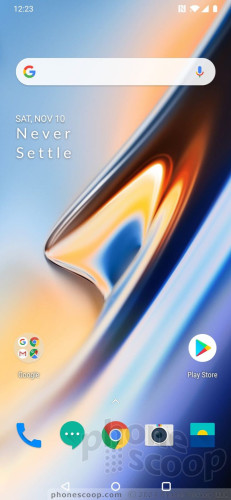
Android 9 introduced an entirely swipe-based navigation system. It has one major crutch: it takes two swipes, or an awkward and uncomfortable long swipe, to get to the app drawer. OxygenOS is a bit more refined.
Much like the UI on Samsung's Galaxy phones, swiping up from the middle of the home screen opens the app drawer, and swiping down opens the Quick Settings / notification shade. When in an app, swipe up from the bottom edge to go back to the home screen, or swipe up from the bottom right (or left) corner to go back one screen. This last gesture takes some time to learn, and if you're in a hurry it's easy to accidentally go to the home screen when you meant to jump back a page.
The rest of the home screen experience is fairly typical. The app drawer, quick settings shade, and settings menu all behave like they do on most other Android phones.
OnePlus reserves the left-most home screen for its Shelf, which is a customizable space where OnePlus will highlight often-accessed apps, actions, people, and information. By default, it shows the local weather, a shortcut for writing a note, and several app suggestions. You can turn it off if you want, but you cannot replace it with your Google Feed. This bugs me.
OnePlus continues to offer a bevy of useful features that other phone makers should consider. For example: a system-wide dark theme, control over the status bar/notch, multi-finger gestures for certain shortcuts, and so on. OnePlus has made these options easy to find in the settings menu, easy to turn on, and easy to understand.
There are several operating modes you can put to use. For example, Gaming Mode ensures you aren't interrupted when playing games. Pocket Mode prevents the phone from lighting up in your pocket. Again, these are a breeze to customize.
The OnePlus 6T has a Snapdragon 845 processor on board with either 6 GB or 8 GB of RAM. This is one of the best CPU/RAM combinations available right now. OnePlus supplied us with the 8 GB version and hoo-boy does it scream. The OnePlus 6T delivers blisteringly fast performance. The 6T chomped through every app I tested without missing a beat.
Camera
Press the power button twice quickly and the camera app springs to life in less than a heartbeat.
Controls on the main camera viewfinder screen include flash, aspect ratio, and timer. I like that the flash includes an “auto” option. You can choose to shoot in 4:3, 16:9, or 1:1 if you wish.
HDR is hidden in the settings. By default, HDR remains in auto mode. You can turn on manual mode, which means you'll be given control over HDR in the viewfinder. The settings allow you to play with sounds, controls, grids, smile capture, and an auto night mode.
Four core shooting modes are available by swiping the viewfinder up/down: photo, video, portrait, and night. Swipe from the camera button to the left to access additional modes, such as time-lapse, slow motion, pro (manual), and panorama.
Portrait mode relies on the two rear camera lenses to provide sharp focus on the subject while blurring the background. I found it easy to use, and I like that you can change the depth of field before capturing the photo.
The pro mode lets you adjust shutter speed (up to 30 seconds), focus, white balance, brightness, and ISO. I like that the screen gives you a live preview of the exposure as you tweak the settings. You can also create and save two custom presets, as well as opt to shoot in RAW. A histogram is available.
Slow-motion lets you slow things down to 240fps in full HD or 480fps in HD. A half-dozen flagships have pushed things to 960fps. You have no control over the time-lapse capture speed at all, but you can toggle between HD and full HD.
The camera's best feature is its speed. It's really, really fast. I'm particularly impressed with how quickly it can focus in low-light settings.
Photos/Video
The main camera has a Sony IMX519 sensor with an aperture of f/1.7, and captures 16-megapixel images. The camera supports optical image stabilization (OIS). It is joined by a secondary Sony IMX376K sensor at 20-megapixels and f/1.7 aperture. The Snapdragon 845's multi-frame processing and AI-assisted scene detection help the sensors a great deal.
The OnePlus 6T easily has the company's best-ever camera. Aside from being swift, it shoots sharp photos that are bright and colorful. The autofocus system and OIS do a great job ensuring you get clean photos even in low light. The HDR mode is an excellent companion when shooting in dynamic settings and balances out those light and dark regions nicely. Images have a true-to-life look to them, which is what I want (most of the time).
The video camera can capture 4K video at up to 60fps. That chews through a lot of storage very quickly. You should be pleased with 1080p footage at 30fps, which is the default capture mode. Everything looks sharp, clean, and bright. There's next to no grain or noise clouding things up. Of note, OnePlus' gallery app includes a nifty video editor. You can use it to assemble clips, as well as apply fun effects, such as reversing the action and looping.
As for selfies, don't worry, OnePlus has your back … er … front. The 16-megapixel selfie shooter has EIS and an aperture of f/2.0. I wish it included autofocus. Selfies generally look good. There's a beautification tool to smooth over your imperfections. The phone also offers studio lighting effects to add different moods to portraits. The screen acts as your flash if you need it.
The OnePlus 6T is all the camera many people will need.
Wrap-Up
OnePlus has done a fine job with the 6T. The device is a true upgrade to the 6 thanks to the larger battery, greater default storage, sharper cameras, and reduced display notch. Some OnePlus fans may be dismayed that the company erased the headphone jack, and I wish the in-display fingerprint reader were faster.
The sleek design and high-quality materials compare well to phones from Apple, Google, LG, and Samsung. The AMOLED display is very good, battery life is better than most, and data speeds were among the best. It's a bummer that voice calls are barely average. I'd love to see the 6T's ringer switch show up on other phones. Similarly, I wish the stereo speakers available on most other flagships would find their way to OnePlus devices.
OxygenOS is the best user interface skin on the market right now, better even than stock Android. It's clean, fast, and includes tools that are truly helpful. OnePlus' camera application is straightforward and quicker than most. I'm pleased that OnePlus has stepped up its camera game; the phone takes excellent pictures and video.
The OnePlus 6T starts at $549 for the 6 GB / 128 GB combo. I say pay the extra $30 to jump to the 8 GB / 128 GB configuration. Even at $579, the 6T is $300 to $600 cheaper than comparable phones from Apple and Google. In this case, the savings are absolutely worth it.

Comments
No messages


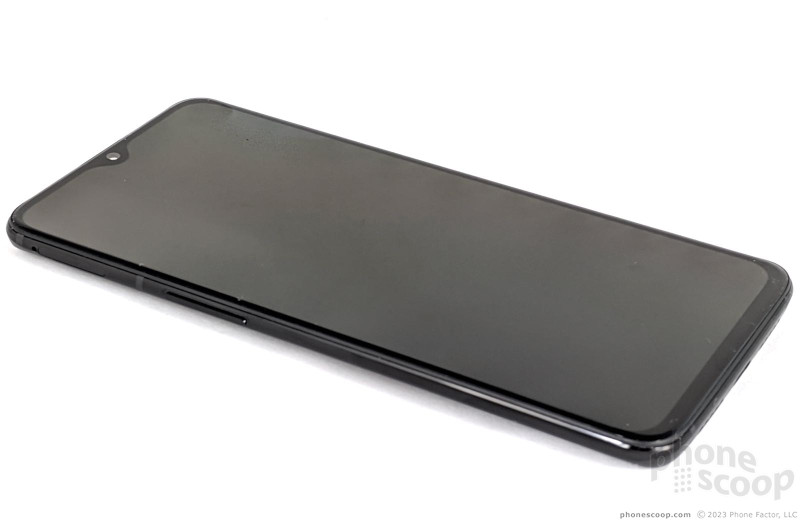












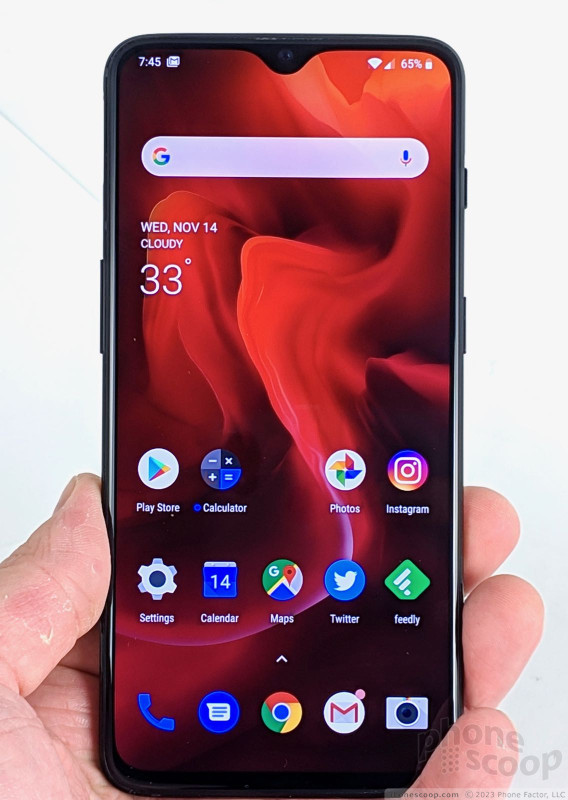









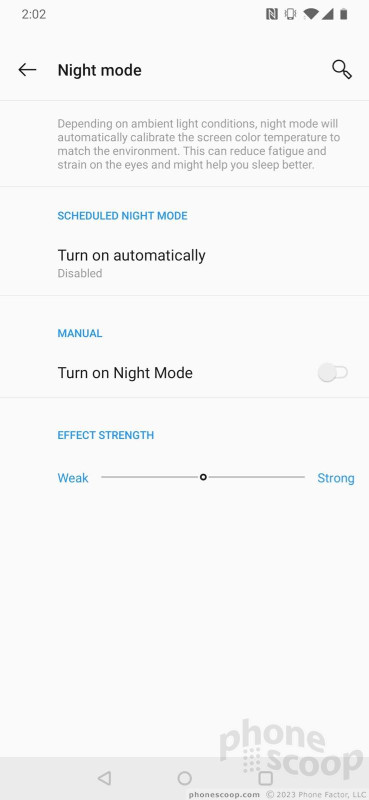





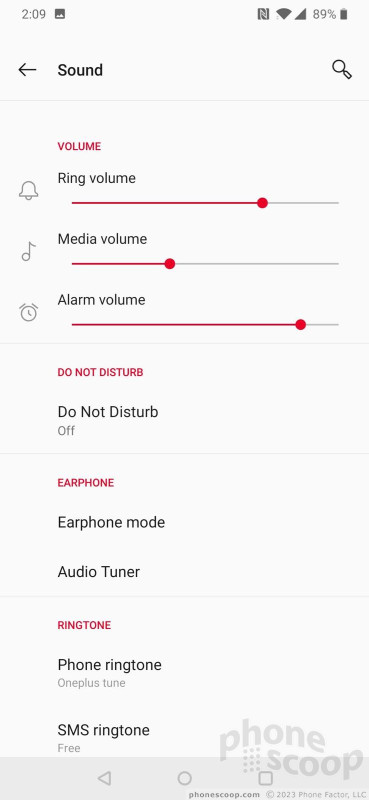



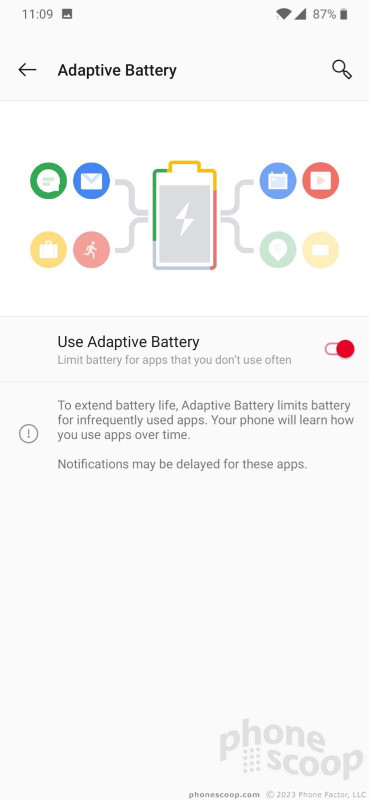




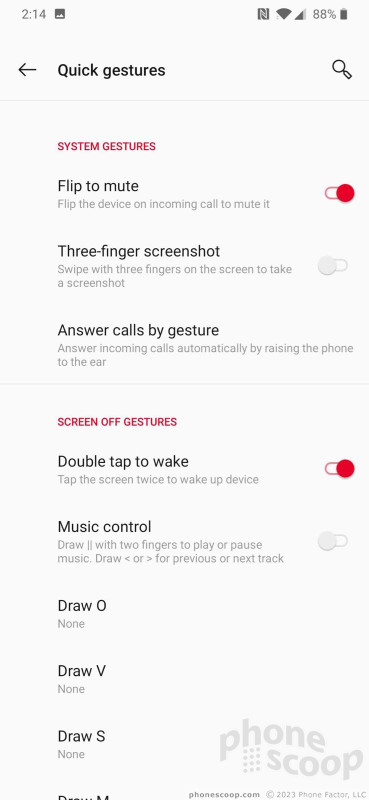





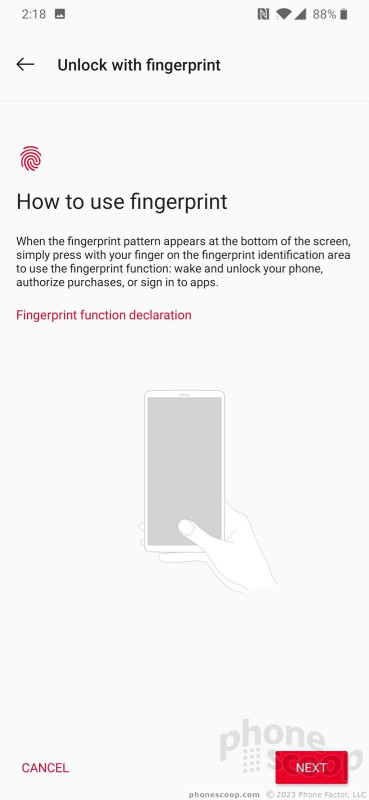










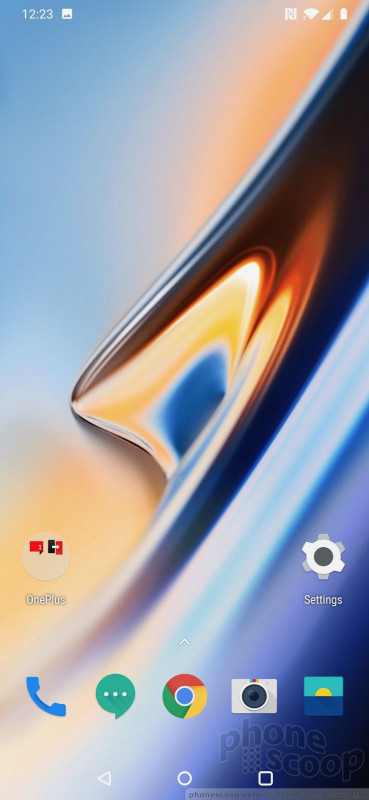














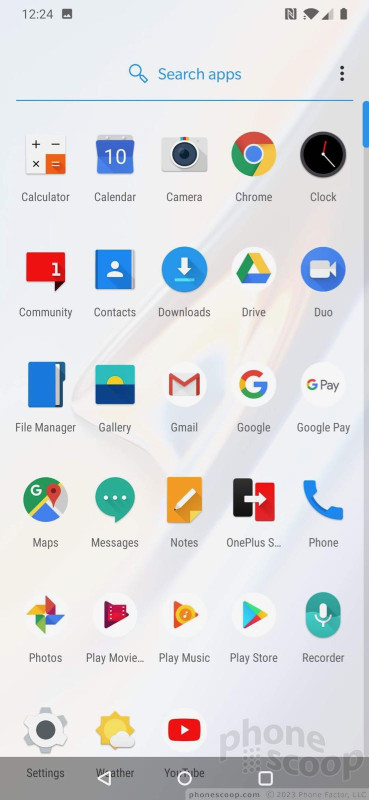





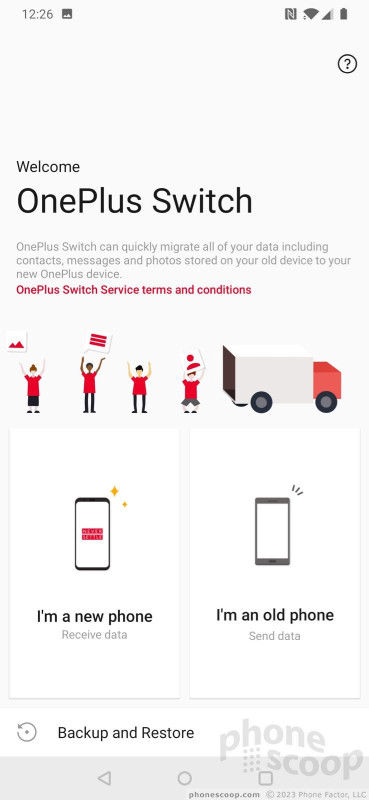




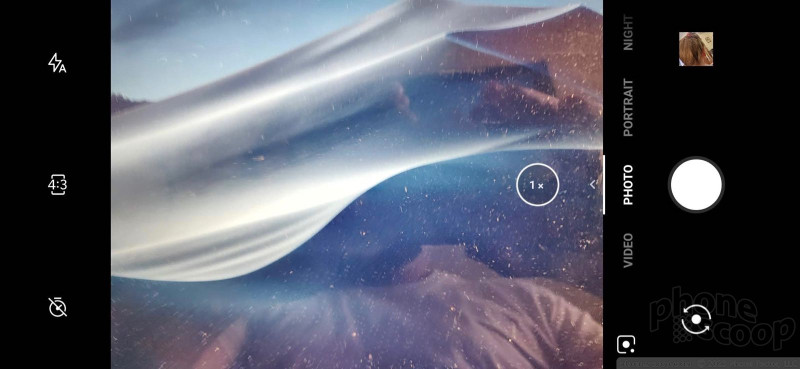





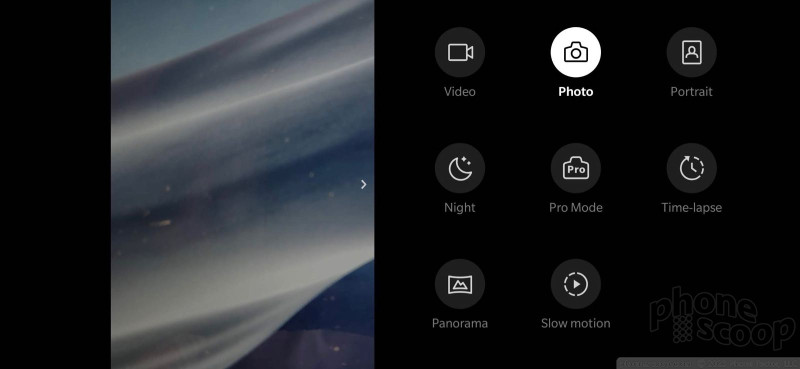



















 Hands on with the OnePlus 6T
Hands on with the OnePlus 6T
 OnePlus Drops the Checkered Flag On OnePlus 6T McLaren Edition
OnePlus Drops the Checkered Flag On OnePlus 6T McLaren Edition
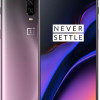 OnePlus to Sell 'Thunder Purple' 6T In North America Nov. 15
OnePlus to Sell 'Thunder Purple' 6T In North America Nov. 15
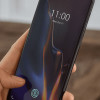 OnePlus 6T Now Available from T-Mobile and OnePlus
OnePlus 6T Now Available from T-Mobile and OnePlus
 OnePlus 6T Packs Under-the-Glass Fingerprint Reader, Teardrop Notch, Dual Cameras
OnePlus 6T Packs Under-the-Glass Fingerprint Reader, Teardrop Notch, Dual Cameras
 OnePlus 6T
OnePlus 6T









